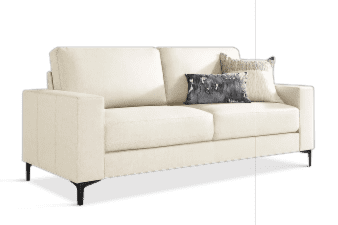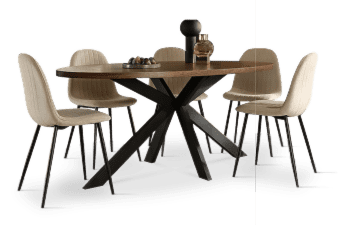Dr Sarah Brewer MSc spoke to Furniture Choice to discuss how important it is to consider your sleeping position when monitoring your general health. Below, she tells us which symptoms to look out for and what the cause may be.
Sleep is so important for health that we spend six to eight hours each night in the Land of Nod – the equivalent of a quarter to a third of our life. During sleep, your brain processes information and experiences to lay down new memories, your muscles and joints recover from constant use during the day, and you produce increased amounts of growth hormone to boost cell renewal and tissue repair. But while you’re asleep, your voluntary muscles become paralyzed to prevent you acting out your dreams. While this aids muscle relaxation, it could lead to aches and strains if you are lying in an awkward position.
Sleeping on your side
Most people (around 60%) sleep mainly on their side. You might think it doesn’t matter on which side, but lying on your right can increase the risk of indigestion and heartburn. The stomach is an asymmetrical organ and, when you lie on your right side, stomach acid pools against the valve at the lower end of the oesophagus which can cause reflux and heartburn. On the other hand, sleeping on your left side makes it easier for trapped wind to roll up the curve of the stomach and escape as a satisfying ‘burp’.
Lying on your stomach
Sleeping flat on your stomach forces your head to turn to one side to avoid being smothered by your pillow. This position also compromises the natural curves of the spine, so you are more likely to wake with neck, arm, shoulder or back pain. This will be worse if the height of your pillows cause your head to twist upwards, stressing the ligaments in your neck even further.
Sleeping partially on your front and partially on your side
Lying partly on your side and partly on your front, with one leg tucked up, is the natural equivalent of the Recovery Position into which first aiders are trained to place unconscious people. This position is great for keeping your airway open, and is the least likely to lead to snoring and joint problems – as long as you don’t raise your top leg too far, which can twist the spine and cause back ache.
When lying on your side, drawing your legs up slightly will reduce nerve compression. Placing a long pillow between your knees is also comforting if you have joint pain.
Sleeping on your back
Only one in six people sleep mainly on their back, but you may be advised to do so if you have neck, shoulder or back problems. Lying flat on your back is best for your spine (especially if you place a small pillow under your knees and in the small of your back) but does mean you are more likely to snore. Your relaxed tongue and throat muscles can drop under the effects of gravity to partially block the inflow of oxygen. In some cases, the airway can become completely obstructed, and you can stop breathing for 10 to 30 seconds at a time – a condition known as obstructive sleep apnoea. You may not be aware of the problem - especially if you sleep alone - but tell-tale symptoms include:
- morning headache
- waking up feeling drunk - even though you've had no alcohol
- waking with a frightening sensation of choking or fighting for air
- excessive daytime sleepiness and yawning
- falling asleep during the day
- poor memory
- lack of concentration with thoughts petering out mid-sentence.
Get your bed partner to gently turn you onto your side if you snore, or use an anti-snoring pillow designed to prop up your head without straining your neck.
Choose the right sleeping surface
The adverse effects of any sleeping position will depend on your sleep surface. Select a comfortable mattress that is not overly hard or too soft - those that are temperature and pressure sensitive, and which adapt to your body shape, are especially good at cradling aching joints. These surfaces reduce tossing and turning during sleep, too, which lifts you from the deeper levels of sleep and even wake briefly, so you don’t feel refreshed next day. Mattresses age, too, and may deteriorate and provide significantly less comfort and support after 8 to ten years of use. And, just as your current laptop and mobile are significantly more efficient than those you owned just ten years ago, mattress technology has also progressed. If you aren’t sleeping well, it may be time to replace your sleeping surface – or even your bed.
Dr Sarah Brewer
www.ExpertHealthReviews.com
Twitter: @DrSarahBHealthy


